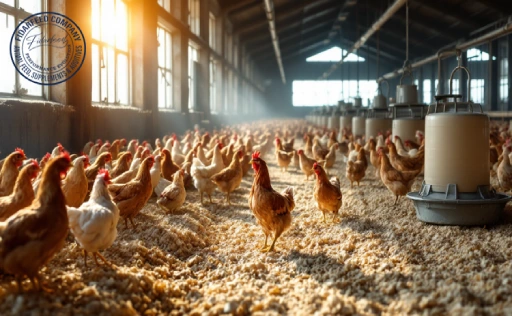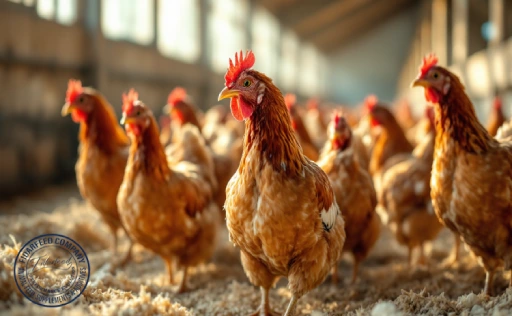
Skin Diseases in Dogs are more than just a surface-level issue. For dog breeders, caretakers, and stakeholders in the animal feed industry, skin conditions can mean the difference between a thriving, healthy dog and one suffering from chronic discomfort. Whether you’re raising a litter of pups or managing a large-scale breeding operation, recognizing and addressing skin disorders is essential to your dogs’ wellbeing—and your professional reputation. This guide was crafted specifically for you: straightforward, practical, and built on real knowledge. Let’s dive into the essentials of skin health, symptoms to watch for, what causes these problems, and how to treat and prevent them effectively.
Healthy Skin Matters: A Breeder’s Guide to Common Dog Conditions
Skin diseases in dogs refer to a wide range of conditions that affect the skin, coat, or underlying tissue. They can be acute or chronic, mild or severe, localized or widespread. These issues may show up as rashes, bald spots, wounds, excessive itching, or even behavioral changes.
Learn more about: Synbiotic Supplement for Dogs and Cats
From a breeder’s perspective, healthy skin is a sign of a well-cared-for animal. Dogs with chronic skin issues may struggle with pain, stress, and even secondary infections that affect their overall health. That’s why early understanding and proactive management are critical—not just for the individual dog, but for the health of the entire kennel.
Warning Signs of Skin Trouble All Breeders Should Watch For
Symptoms of skihes
n disease can sneak up subtly or arrive with dramatic flair. Either way, acting fast can save you—and your dog—a world of trouble.
Be on the lookout for:
-
Persistent itching or licking, especially in the paws, ears, or belly
-
Hair loss or bald patc
- Red, inflamed, or flaky skin
Learn more about: Why Your Dog Has Severe Diarrhea and How to Cure It
-
Sores, scabs, or hot spots
-
Unusual odor, especially around ears or skin folds
-
Changes in mood, such as irritability or lethargy
These signs can be indicators of anything from parasites to hormonal imbalances. Even if they seem minor, they’re your dog’s way of saying, “Something’s not right.”
Digging Deeper: Why Dogs Develop Skin Issues
Pinpointing the cause of a skin condition is half the battle. Here are the most common culprits:
-
Allergies: Dogs can be allergic to pollen, dust mites, food ingredients (like beef or chicken), or even their own shampoo.
-
Parasites: Fleas, ticks, and mites are tiny pests with big consequences. Mange, caused by mites, is especially common in crowded environments.
-
Fungal and bacterial infections: Ringworm (a fungus, despite its name) and staph infections can spread quickly without proper hygiene.
Learn more about: Best Dog Foods for Small Breeds: Pomeranian Breeder Edition
-
Environmental triggers: Dirty bedding, poorly ventilated kennels, or exposure to harsh chemicals can irritate the skin.
-
Underlying medical issues: Hormonal imbalances (e.g., hypothyroidism), autoimmune diseases, and nutritional deficiencies can all manifest through the skin.
In one study published in the Journal of Veterinary Dermatology, over 60% of skin conditions in dogs were linked to atopic dermatitis—a chronic allergic skin disease often triggered by environmental allergens.
How to Diagnose Skin Conditions in Dogs: When to Act and When to Call the Vet
Dog breeders often spot skin problems early, but diagnosing the root cause takes more than observation. Here’s what you can do:
-
Check for fleas or visible parasites with a fine-tooth comb.
-
Look for patterns—is the issue seasonal? Does it affect just one dog or several?
-
Record symptoms and behaviors, such as when itching began or what foods were recently introduced.
-
Consult your veterinarian if symptoms persist beyond a few days, worsen, or involve open wounds.
Learn more about: Understanding Skin Problems and Hair Loss in Dogs: Symptoms, Causes & Solutions
A vet may recommend a skin scraping, fungal culture, or blood tests to confirm the cause. Avoid self-diagnosing or relying solely on over-the-counter products—some conditions require targeted medical treatment.
Treatment Options for Dog Skin Diseases: Medications, Shampoos, and Natural Remedies
Treatment depends on the diagnosis, but here are the most common approaches:
-
Antibiotics or antifungals for infections
-
Antihistamines or corticosteroids for allergies
-
Topical ointments or medicated shampoos for itching and inflammation
Learn more about: Why Your Dog Has Severe Diarrhea and How to Cure It
-
Flea and tick control treatments, such as chewables or spot-ons
-
Natural remedies, like coconut oil, oatmeal baths, or aloe vera (but always consult your vet first)
For chronic conditions, a long-term management plan—including diet, supplements, and environment changes—is usually more effective than one-off treatments.
Prevention Tips: How Breeders Can Keep Skin Diseases Out of Their Kennels
Prevention starts with cleanliness and consistency:
-
Disinfect kennels regularly and provide clean bedding.
-
Groom dogs on a set schedule, even if they don’t appear dirty.
-
Isolate new or sick dogs before introducing them to the main population.
Learn more about: Why is My Dog Stressed? Common Causes of Stress in Dogs
-
Control pests rigorously, both inside and outside.
-
Avoid overcrowding, which increases stress and the spread of infections.
Well-kept environments not only prevent skin issues—they also boost your reputation as a responsible breeder.
The Role of Diet in Preventing Skin Issues in Dogs
A dog’s skin reflects what goes on inside. Nutritional deficiencies—especially in essential fatty acids like omega-3 and omega-6—often lead to dry, flaky, or irritated skin.
For optimal skin health:
-
Include salmon oil, flaxseed, or fish-based feeds.
-
Ensure diets are complete and balanced, especially for puppies and lactating females.
-
Watch for food sensitivities—common allergens include soy, dairy, and certain proteins.
The American Kennel Club Canine Health Foundation emphasizes that proper nutrition is the first line of defense against chronic skin issues.
Grooming and Cleaning Practices Every Dog Breeder Should Follow
Clean dogs are happy dogs. Here’s your grooming checklist:
-
Brush coats regularly to remove dirt and prevent matting.
-
Bathe dogs using gentle, vet-approved shampoos, especially after outdoor exposure.
-
Clean ears and trim nails to reduce the risk of fungal buildup and scratches.
-
Wash food and water bowls daily to prevent bacterial growth.
Learn more about: Probiotic Supplements
Make it a habit, not a reaction. Routine grooming prevents issues before they start—and gives you a chance to catch early symptoms.
Breeding Considerations: Managing Hereditary Skin Conditions in Dogs
Some skin diseases—like ichthyosis or color dilution alopecia—are genetic. Ethical breeders should:
-
Screen breeding dogs for hereditary skin conditions.
-
Keep detailed health records and track symptoms in litters.
-
Avoid breeding dogs with known chronic skin issues, especially if symptoms are severe or resistant to treatment.
Transparency with buyers builds trust—and contributes to healthier bloodlines over time.
Final Thoughts: Protecting Your Dogs from Skin Diseases with Confidence
Skin diseases in dogs can be frustrating, but they’re manageable—and often preventable—with the right knowledge and tools. As a dog breeder or stakeholder in the feed and care industry, your role is critical. From selecting the right nutrition to maintaining clean facilities, your choices have a direct impact on the health of your dogs.
We hope this guide has given you actionable insights to improve skin health in your breeding program or care operation. Have questions, thoughts, or experiences to share? We’d love to hear from you! Leave a comment below, and let’s keep the conversation going.







